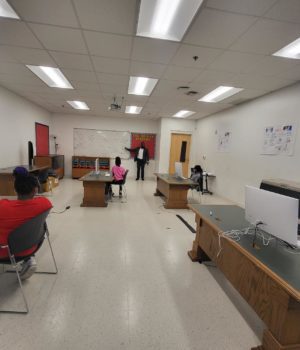Top Ten Triggers of Charter School Bond Default: #10 School Safety
With its focus on transparency and accountability in the high-yield charter school bond market, School Improvement Partnership is retained by dozens of public charter schools across the country to perform continuing disclosure reporting. From that work has emerged our assessment of the TOP TEN TRIGGERS OF CHARTER SCHOOL BOND DEFAULTS. We will explore one per week over the next ten weeks.
Number 10: School Safety
By Alexis Turner and Alan Wohlstetter of School Improvement Partnership
School safety is an ever-increasing concern to students and teachers, their families and charter school bond investors. From the tragic school shootings at Stoneman Douglas High School in Parkland and Colorado’s STEM School Highlands Ranch Charter School, to online bullying and other threats of student abuse, today’s school environment presents a myriad of new challenges for administrators. Before they invest, bondholders should look at the extent to which charter schools have implemented best-practice school safety programs to make schools as secure as possible in this age of insecurity. These would include: (i) school security officers; (ii) threat and safety training; (iii) behavioral/mental health supports needed for a healthy school culture; and (iv) surveillance cameras or metal detectors.
Trends show that on-site school security officers at charter schools may become more commonplace. In Florida, charters push to gain access to the same security resources as district schools. For charter schools in Palm Beach County, these resources include the provision of safe school officers who are either law enforcement officers or trained school personnel. In Colorado, the Douglas County Board of Education renewed the Highlands Ranch charter contingent upon the hiring of school security officers. Aside from focusing on the hiring of security officers, the renewal also stipulated other measures, including adequate threat and safety training programs for administration and the establishment of new minimum requirements for numbers of teachers and mental health staff.
Broadening the focus to student mental health is supported by researchers who assert that a prevention-style approach to school safety and a healthy school climate is more effective than detection technology alone. Because bullying has been cited as a precursor to physical violence, school administrators utilizing best practices standardize and document their operating procedures for investigating and reporting suspicion of abuse or threats to children beyond what is required by mandatory reporter statutes.
Studies indicate that charter schools may be doing a better job of fostering a healthy school climate than traditional public schools, as charter schools are generally rated as safer by a variety of metrics. In one study, students and staff at charter schools reported fewer school safety issues than those at traditional public schools, even while the charter schools had less grounds control, and fewer security cameras, metal detectors, and dog sniff procedures than the public schools. Veronica Joyner, the founder and chief administrator at Mathematics Civics and Sciences Charter School in Philadelphia, explained that her school relies more on a strong school culture than on equipment such as metal detectors to keep students safe.
Still, there is value to adding facilities security measures, such as cameras and detectors, to schools as well. In Pennsylvania, the School District of Philadelphia (SDP) mandated the use of metal detectors in all high schools. In the month following the mandate, the School Safety and Security Committee (SSSC) of Pennsylvania awarded the SDP $3.8 million from a series of grants designated for school security purposes. The SSSC allocated portions of the grant to local charter schools as well, including the Philadelphia Charter School for Arts and Sciences, which received $520,700. The grant provided funding for both “security planning and purchase of security-related technology”, as well as behavioral support and “research-based violence prevention programs that address risk factors”, among other measures.
Bondholders certainly do not hold the responsibility for preventing tragedy at the charter schools in their portfolios. They should, however, consider the implications of security risks on the success of the schools in their portfolios. Looking at the extent to which charter schools have implemented best-practice school safety programs is one way to mitigate risk of bond default.



